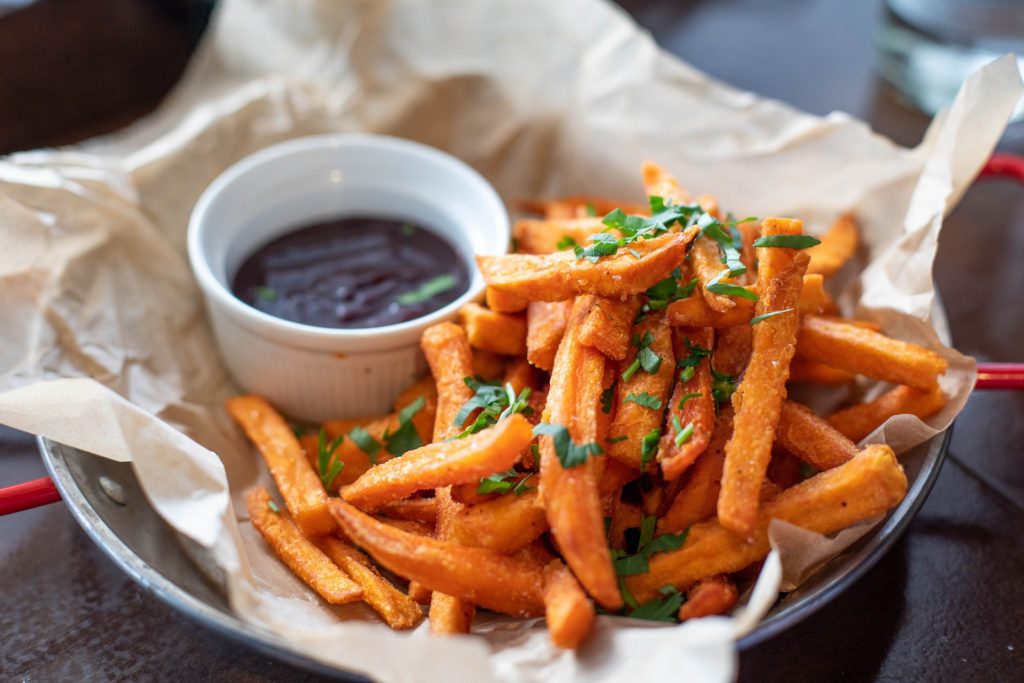Healthy Living

The Basics of Macronutrients
Healthy Living with Lynae
MACROS: Macros is short for macronutrients, and is a term to describe nutrients your body needs in large amounts. The fundamentals of nutrition is eating a diet that is full of nutrient-dense foods. Nutrient-dense foods are foods that deliver the highest nutritional content for the calories. Calorie for calorie, nutrient-dense foods fuel your body with more of what it needs for good health.
The term, “Counting Macros” has become very popular. Macros include carbohydrates, protein and fats. They are all energy-providing nutrients, with carbohydrates being the main source of energy for your body. Counting macros can be helpful if you have goals to lose weight, gain weight, build muscle or are managing a health condition where restrictions are important. Carbohydrates have 4 calories per gram, Proteins have 4 calories per gram, and Fats have 9 calories per gram. However, not every carb, protein or fat is created equal. The general rule for adults, is 45-65 percent of calories should come from carbs, 10-35 percent from protein, and 20-35 percent from fat. Again, this is a general guideline, and the ranges can change based on your specific goals.
Each Macro has a dierent function in the body and has varying effects on your health, metabolism, and energy levels:
- Carbohydrates primarily serve as the body’s main energy source. They are broken down into glucose, which fuels cells, especially in the brain and muscles during high-intensity activities. Simple carbs (like sugar) can cause rapid spikes in blood sugar, while complex carbs (like whole grains and vegetables) oer sustained energy and ber. Complex Carbs are the ones you want to aim for! Depending on the type of carb, it can lead to quick energy spikes and crashes, which is what you want to avoid.
- Protein is essential for growth, repair, and maintenance of tissues. They are made up of amino acids,which play critical roles in building enzymes, hormones, and immune functions. Protein can alsoboost metabolism. Animal proteins typically contain all essential amino acids, while plant proteinsmay lack one or more. Quality and digestibility vary. Proteins help control appetite.
- Fats do provide long-term energy, support cell structure, and are necessary for the absorption of fatsoluble vitamins (A, D, E, K). They also play a role in hormone production. Despite fats getting a bad rap, they are essential. However, like carbs and proteins, not all fats are created equal. Saturated fats can raise cholesterol levels and increase heart disease risk, while unsaturated fats (found in avocados, nuts, and sh) are generally considered healthier.
All three macronutrients are vital for health and the quality and source and how they are metabolized, can greatly aect your health. Click here, for best of Carbs, Proteins, and Fats. There are many apps that help you track your nutrients. I recommend MYfitnessPal for simplicity purposes and access on any web-enabled device.
The Basics of Micronutrients
Healthy Living with Lynae
MICROS: Micros is short for micronutrients and are the vitamins and minerals we need in our body in small amounts for optimal function. Despite the small amounts required, they are essential in regulating the function of all cells and organs in your body.
Micros are obtained through food and/or supplements. Each micronutrient amount required is dierent and is based on age and sex. There are four types of Micronutrients, Water-soluble vitamins, fat-soluble vitamins, microminerals, and trace minerals. It can be a bit overwhelming when it comes to what vitamins and minerals are required for optimal health, but a varied diet rich in fruits, vegetables, whole grains, lean proteins, nuts, and seeds typically provides adequate micronutrients. Each food group contributes dierent vitamins and minerals, so diversity is key. Sometimes, diet alone may not provide all the necessary nutrients, especially if someone has specic dietary restrictions, health conditions, or increased needs due to factors like pregnancy or age. Vitamins and mineral supplements can help ll in gaps to prevent deciencies, improve energy levels, enhance mental clarity, and support overall well-being.
To name a few Vitamins and Minerals and their functions:
- Vitamin A - vision, immune system, skin health, growth, is a great antioxidant.
- Vitamin B12 - red blood cell production, nervous system support, energy production, heart health.
- Vitamin C - Immune support, skin healthy, antioxidant protection, iron absorption, heart health.
- Vitamin D - Bone health, immune system, mood and mental health, heart health, muscle function.
- Calcium - Bone and teeth health, muscle function, nerve transmission, blood clotting.
- Magnesium - Muscle and Nerve function, energy production, bone health, heart healthy, mood and mental health, blood sugar regulation.
- Potassium - Fluid balance, muscle function, kidney health, muscle function, heart health.
Let’s talk WATER!
Your body requires a large quantity of water! It does not yield energy but is critical for so many body functions! I will do a segment specically on WATER because it requires that much attention!

Understanding Food Labels and Ingredient Lists
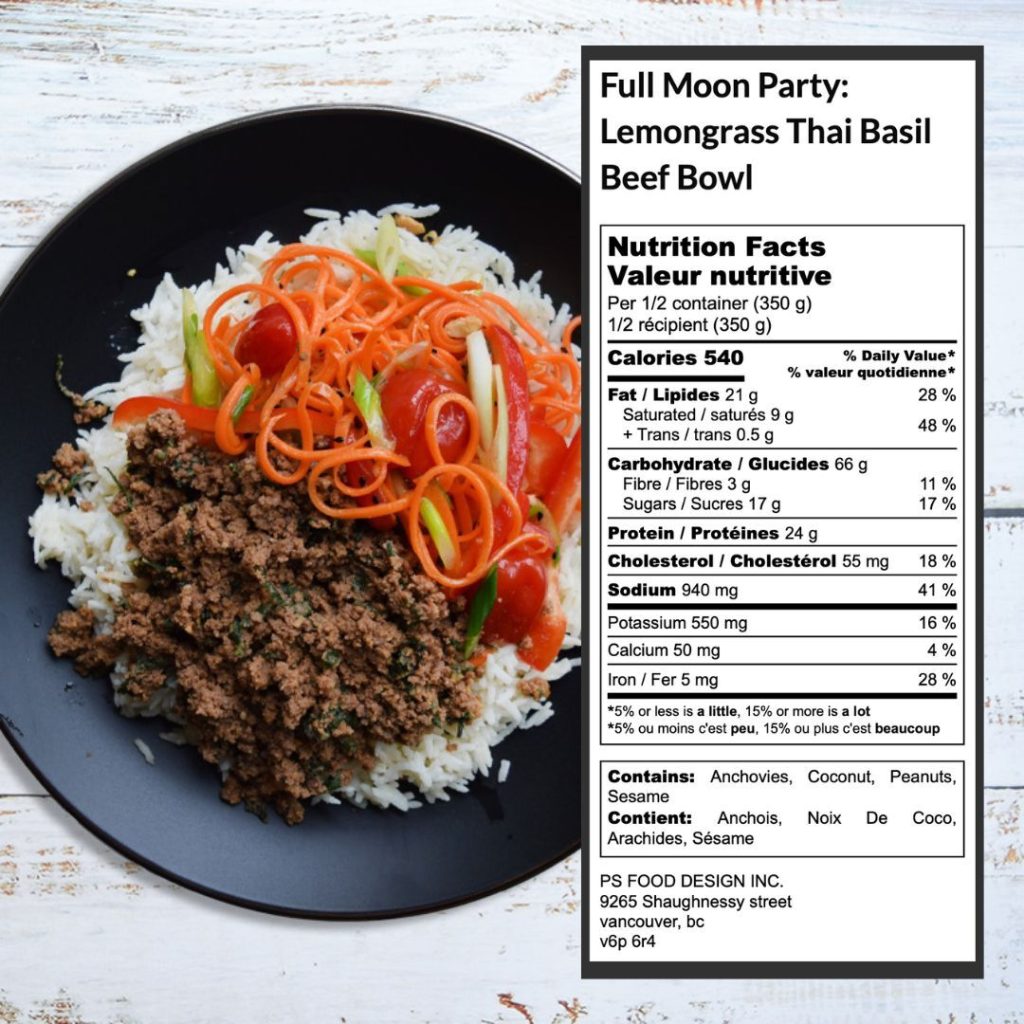
FOOD LABELS: All prepackaged food must contain a food label that contains a Nutrition Facts Table and Ingredients list. Understanding Nutrition Facts Tables and Ingredient Lists can be a bit daunting, but it can be extremely helpful in understanding what nutrients you are taking in and signicantly impact your health and wellness goals.
In Canada, Nutrition Facts Tables must include serving size, calories, % Daily Value and 13 core nutrients (fat, saturated fat, trans fat, cholesterol, sodium, carbs, ber, sugars, protein, Vitamin A, Vitamin C, calcium and iron). The format remains the same on all products. It is important to note, that the table is based on the serving size that is listed. 5% DV or less is a little of a certain nutrient, 15% DV or more is a lot. DV is meant to be a benchmark.
Nutrition Facts Tables helps you compare similar items so you can choose the healthier option, allows for you to track nutrients, and helps you select items if restricted to a special diet for health reasons.
Foods that don’t require a label are fresh fruits, vegetables, raw meat, poultry, sh and seafood, foods prepared or processed at stores, foods that contain very few nutrients (coee, tea, spices) and alcohol. Businesses are not required to have Nutrition Facts attached to their products; however many have chosen to for consumer awareness.
TIP: Try to choose foods that have more Fiber, Vitamins A, C, iron, and calcium and less sugar, saturated fat, trans fat, sodium, and cholesterol.
INGREDIENT LISTS: Ingredient Lists must include all ingredients in the product. They are listed in order by weight with the heaviest ingredient listed rst and the lightest, last. Therefore, the rst products generally represent the largest portion of what you are eating. This can be extremely helpful if you have a food allergy or sensitivity to certain foods, or ingredients you are trying to avoid. Be aware that avours, food additives, seasoning (except salt), vitamins and minerals, MSG can appear at the end of the list in any order. Click here for Ingredient List Tips.
Health Canada is a great resource for further information on Nutrition Facts Tables, List of Ingredients, Nutrition Claims and Nutrition Symbols.
5 QUICK TIPS:
- Up your Fiber! Aim for 25-30 grams a day.
- Add protein to every meal. Click here for 60 High Protein Snack Ideas.
- Vitamin D! Aim to 1000 to 2000 IU per day.
- Limit Sugar intake! Aim for no more than 30 grams a day.
- Go for Colour! The most vibrant the colour in fruit and vegetables, the richer in vitamins, minerals, ber & antioxidants.
“Elevate Your Wellness”

Best of Carbs , Proteins and Fats
Carbohydrate healthier choices
Whole Grains
- Examples: Whole or Steel Cut Oats, quinoa, brown rice, barley, whole-grain bread, and whole-wheat pasta.
- Benets: Whole grains are minimally processed, high in ber, vitamins and essential minerals, helps regulate blood sugar, aids digestion, and support long-term energy.
Starchy Vegetables
- Examples: Sweet potatoes, pumpkins, squash, beets, corn and parsnips
- Benets: These are packed with ber, vitamins, and antioxidants, and they help keep blood sugar stable.
Legumes
- Examples: Lentils, chickpeas, black beans, and peas
- Benets: Legumes are rich in ber and protein, which promote fullness and aid in blood sugar control.
Fruits
- Examples: Berries, apples, bananas, pear and oranges
- Benets: Fruits contain natural sugars along with ber, vitamins, and antioxidants, making them a great energy-boosting option without spiking blood sugar too much. Low-glycemic fruits in particular release sugars more slowly, preventing blood sugar spikes.
Vegetables
- Examples: Carrots, bell peppers, zucchini, broccoli, cauliower, and leafy greens.
- Benets: Low is calories, ber-rich, aids in digestion, packed with vitamins, and blood sugar stability.
Dairy and Dairy Alternatives
- Examples: Greek yogurt (low sugar) and almond or soy milk
- Benets: Greek yogurt has a balanced mix of protein and carbs and provides probiotics for gut health. Good sources of calcium and protein, that pair well with other foods for balanced meals or snacks.
Summary: Choose whole, unprocessed options when possible, as they contain ber and essential nutrients. Pair carbs with protein or healthy fats (e.g., fruit with nuts) to slow digestion and keep energy levels stable.
Protein healthier choices:
Lean Meats
- Examples: Chicken breast, turkey, and lean cuts of beef or pork.
- Benets: High in protein with essential amino acids, B vitamins, iron, and relatively low in saturated fat.
Fish and Seafood
- Examples: Salmon, tuna, trout, sardines, and shrimp.
- Benets: Rich in high-quality protein and omega-3 fatty acids, which support heart and brain health.
Eggs
- Benets: A complete protein with all essential amino acids, plus vitamins, minerals, and healthy fats.
Dairy Products
- Examples: Greek yogurt, cottage cheese, milk, and low-fat cheeses.
- Benets: High in protein and calcium, plus probiotics in some dairy (like yogurt) for gut health.
Legumes
- Examples: Lentils, black beans, chickpeas, and peas
- Benets: Great plant-based protein with ber and other nutrients, promoting fullness and digestive health.
Nuts and Seeds
- Examples: Almonds, chia seeds, axseeds, pumpkin seeds, and walnuts.
- Benets: Provide protein along with healthy fats, ber, and various vitamins and minerals.
Soy Products
- Examples: Tofu, tempeh, and edamame
- Benets: Soy is a complete plant protein and provides ber, iron, and magnesium. Great for vegetarians and vegans.
Whole Grains (higher-protein options)
- Examples: Quinoa, farro, and amaranth.
- Benets: Although grains are not as high in protein as meats or legumes, certain grains like quinoa offer a complete protein prole along with fiber.
Protein Powders
- Examples: Whey, casein, pea, and hemp protein
- Benets: Useful for boosting protein intake, especially after workouts. Choose high-quality powders with minimal additives.
Summary: The best types of protein come from sources that are nutrient-dense, complete (contain all essential amino acids), and minimally processed.
Fats healthier choices
Monounsaturated Fats
- Examples: Olive oil, avocados, nuts (like almonds and cashews), and seeds
- Benets: These fats are heart-healthy, help reduce bad cholesterol levels, and are rich in antioxidants, especially olive oil.
Omega-3 Fatty Acids
- Examples: Fatty sh (like salmon, sardines, mackerel), axseeds, chia seeds, and walnuts.
- Benets: Omega-3s are anti-inammatory, support brain and heart health, and can reduce the risk of chronic diseases.
Polyunsaturated Fats
- Examples: Sunower oil, safower oil, walnuts, and sunower seeds.
- Benets: These fats, including omega-6s, are essential fats your body can’t make on its own. They support cell function and can help reduce cholesterol when used in moderation.
Medium-Chain Triglycerides (MCTs)
- Examples: Coconut oil and MCT oil.
- Benets: MCTs are easily absorbed and quickly converted into energy, making them a good option for a quick energy boost and potentially supporting weight management.
Fats from Nuts and Seeds
- Examples: Almonds, walnuts, chia seeds, and hemp seeds.
- Benets: These fats come with added ber, protein, and vitamins, like vitamin E, which is great for skin health and reducing inammation.
Summary: Healthy fats are essential for brain function, hormone regulation, and overall health. Limit saturated fats (like those found in butter, red meat, and palm oil) and avoid trans fats (found in processed foods).
Ingredient List Tips
Short Ingredient Lists
- Fewer Ingredients: Generally, shorter ingredient lists are better, as they often indicate fewer additives and preservatives. Whole, minimally processed foods usually have only a few ingredients (e.g., fruits, vegetables, grains, nuts).
- Recognizable Ingredients: Ingredients should be whole foods or recognizable components. If you can’t pronounce them or they sound like chemicals, it might be a sign to avoid them.
Quality Over Quantity
- Focus on Nutrients: It's more important to look at the quality of the ingredients rather than just the number. For example, a product with ve ingredients can still be unhealthy if they are all processed sugars and unhealthy fats.
- Whole Foods: Look for products that contain whole foods as the primary ingredients. For example, if the rst ingredient is whole grains, fruits, or vegetables, it’s generally a better choice.
Avoiding Additives
- Limit Additives: If an ingredient list has many additives, preservatives, and articial ingredients, it might be worth avoiding, even if the total number of ingredients isn’t high.
- Natural Flavors and Sweeteners: While not inherently bad, terms like "natural avors" can be vague. It's best to understand what those entail or to choose products with transparent ingredient lists.
Context Matters
- Serving Size: Pay attention to the serving size. A food may have a short ingredient list but can still be high in calories, sugar, or sodium.
- Overall Diet: Consider how a product ts into your overall dietary pattern. One processed item might not derail a healthy diet if the rest of your meals are wholesome.
General Recommendatio
- Aim for Whole Foods: Prioritize foods that are as close to their natural state as possible, such as fruits, vegetables, whole grains, nuts, seeds, and lean proteins.
- Read Labels: Familiarize yourself with reading labels, and look for foods with minimal, highquality ingredients.
Summary: While there isn’t a specic number of ingredients that denes a “good” product, aiming for shorter, recognizable ingredient lists with whole foods can generally lead to healthier choices. If you’re uncertain about a product, consider the overall nutritional value and how it ts into your diet.
60 HIGH
PROTEIN SNACK IDEAS
Healthy Living with Lynae
High protein snacks can provide a number of benefits for your health and wellbeing. Here are some reasons why high protein snacks are good for you:
They help build and repair tissues:
Protein is an essential nutrient that helps build and repair tissues in the body, including muscles, bones, skin, and organs. Consuming high protein snacks can help support these processes and promote tissue growth and repair.
They can help with weight management:
Protein is a highly satiating nutrient, meaning it can help you feel full and satisfied after eating. By consuming high protein snacks, you may be less likely to overeat or snack on less healthy options, which can help support weight management.
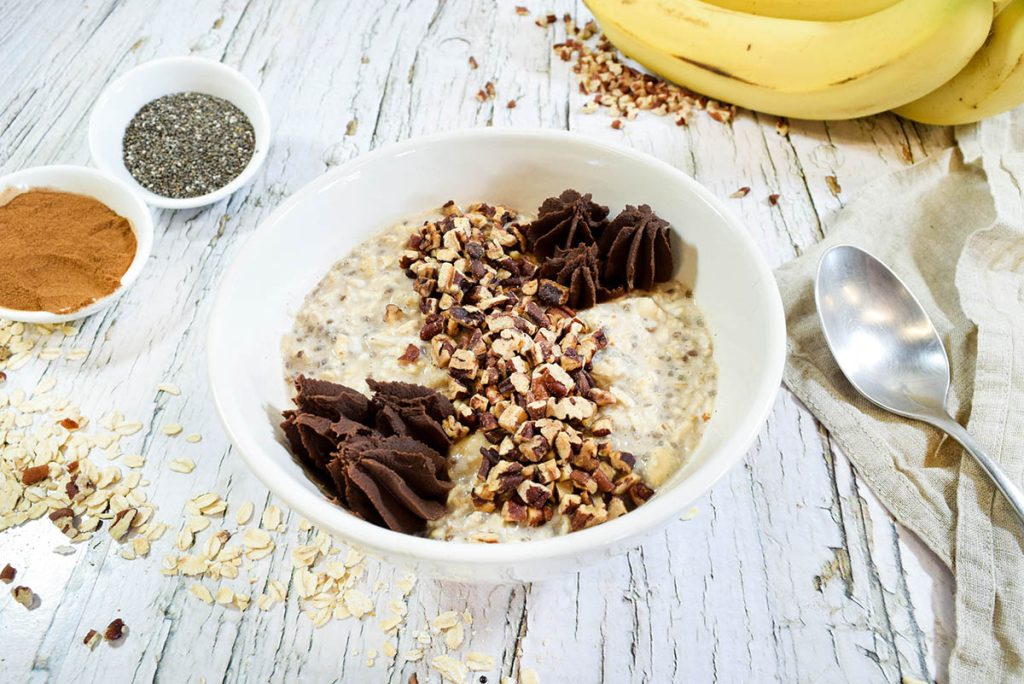
They can improve muscle strength and function:
Consuming high protein snacks can help support muscle growth and strength, which is important for overall physical function and performance.
They can support healthy metabolism:
Protein has a higher thermic effect than other nutrients, meaning that it requires more energy to digest and metabolise. This can help support a healthy metabolism and promote weight loss.
They can support blood sugar control:
Consuming high protein snacks can help stabilise blood sugar levels, which is important for preventing energy crashes and supporting overall health.
Overall, high protein snacks can provide a number of health benefits and are a great option for supporting a healthy diet and lifestyle. Here we have 50 super high protein snacks you can make at home!
Protein Smoothie:
Blend protein powder, frozen fruit, and Greek yogurt for a refreshing and protein-packed snack.
Deviled Eggs:
Mix hard-boiled egg yolks with Greek yogurt, mustard, and herbs for a delicious and high protein snack.
Roasted Turkey Breast:
Slice roasted turkey breast and pair with veggies for a protein-rich snack.
Cottage Cheese and Tomato:
Top cottage cheese with sliced tomatoes and herbs for a refreshing and protein-packed snack.
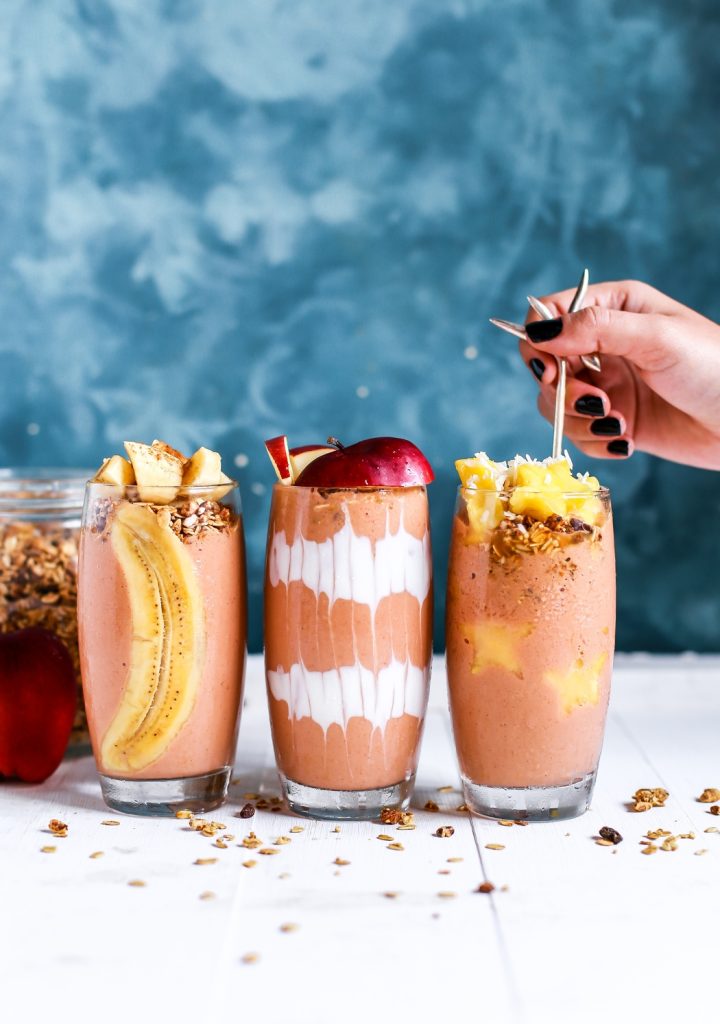
Baked Tofu:
Marinate tofu with your favourite spices, then bake for a protein-rich and vegan snack.
Protein Pudding:
Mix protein powder with Greek yogurt, almond milk, and cocoa powder for a protein-rich and satisfying snack.
Smoked Salmon and Cucumber:
Top cucumber slices with smoked salmon for a high protein and omega-3 rich snac
Quinoa and Veggie Stuffed Peppers:
Stuff roasted bell peppers with quinoa, veggies, and cheese for a protein-packed and vegetarian snack.
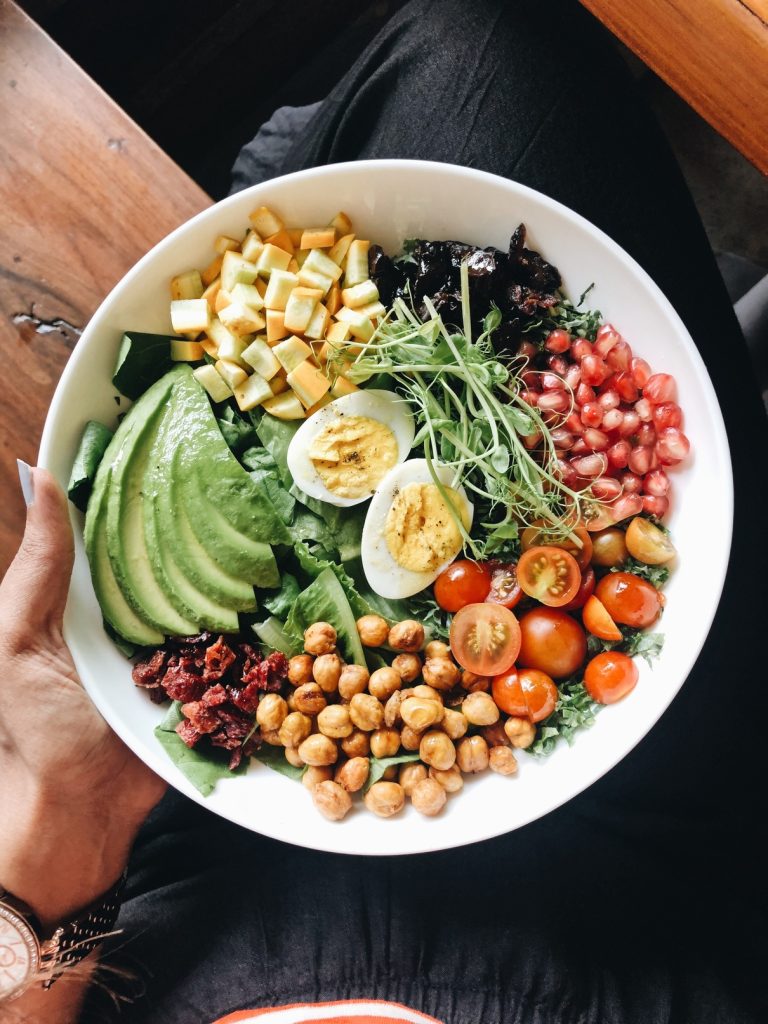
Apple and Cheese:
Pair apple slices with cheese for a protein and fibre-rich snack.
Chickpea Salad:
Mix canned chickpeas with veggies, herbs, and dressing for a protein-rich and vegetarian snack.
Shrimp Cocktail:
Serve boiled shrimp with cocktail sauce for a protein-rich and lowcalorie snack.
Greek Yogurt Bark:
Mix Greek yogurt, honey, and fruit, then freeze for a protein-rich and refreshing snack.
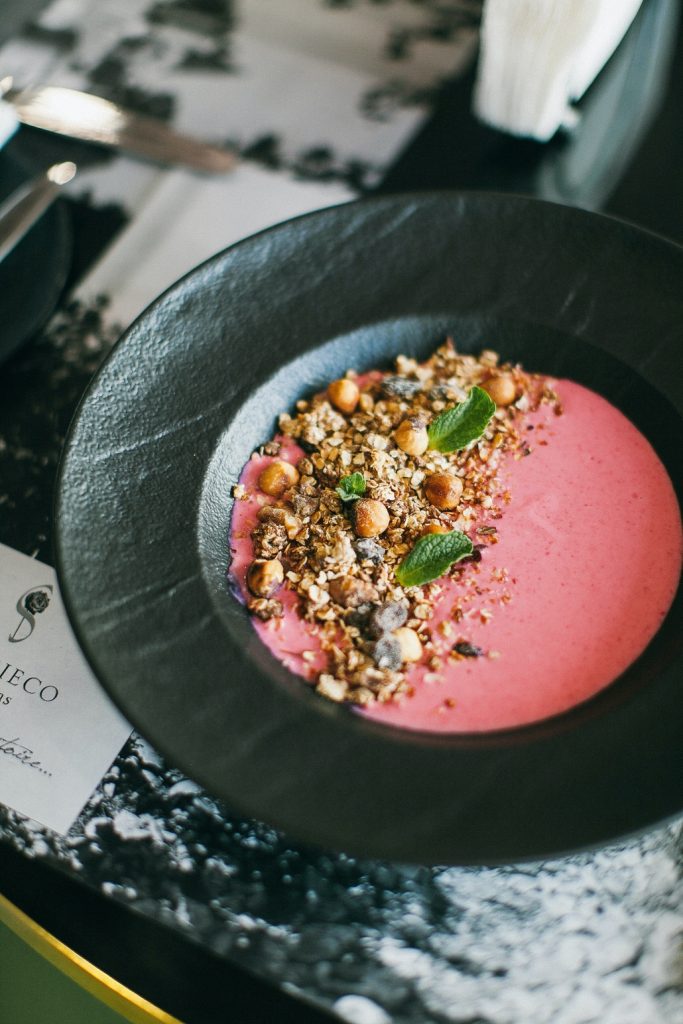
Protein Muffins:
Bake muffins with protein powder, oats, and fruit for a filling and protein-rich snack.
Chicken Salad Lettuce Wraps:
Mix cooked chicken with avocado, veggies, and herbs, then wrap in lettuce leaves for a protein-packed snack
Chocolate Covered Almonds:
Dip almonds in melted dark chocolate for a protein and antioxidantrich snack.
Beef or Turkey Meatballs:
Bake or grill meatballs and serve with veggies for a protein-rich snack.
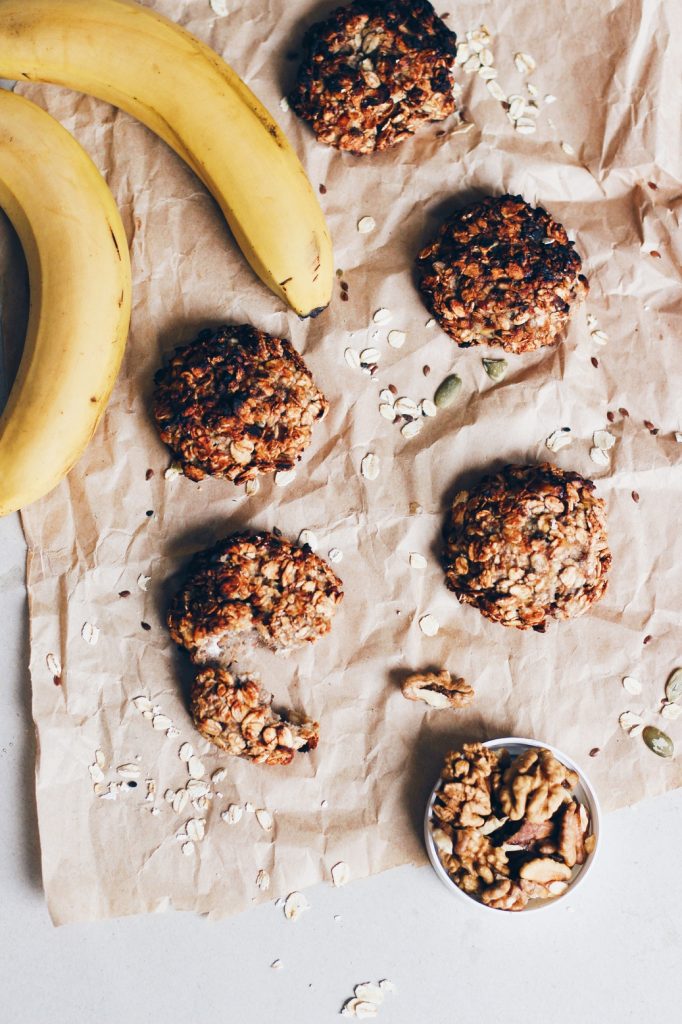
Tofu Scramble:
Scramble tofu with veggies, herbs, and spices for a protein-rich and vegan snack.
Spinach and Cheese Stuffed Mushrooms:
Stuff mushrooms with spinach, cheese, and herbs for a protein-rich and vegetarian snack.
Turkey Bacon Wrapped Asparagus:
Wrap asparagus spears with turkey bacon and bake for a proteinpacked and low-calorie snack.
Roasted Red Pepper Hummus:
Blend roasted red peppers with chickpeas and spices for a proteinrich dip for veggies or crackers.
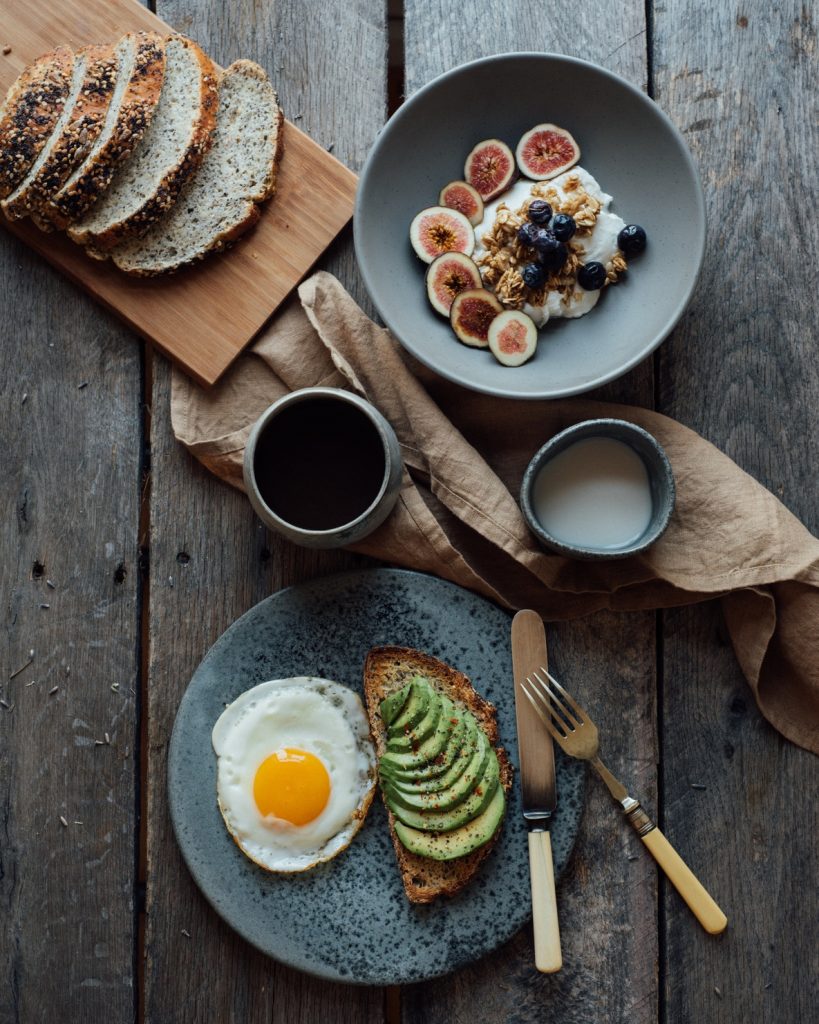
Salmon and Avocado Toast:
Top toast with smoked salmon and sliced avocado for a protein-rich and omega-3 rich snack.
Spicy Roasted Almonds:
Toss almonds with hot sauce and spices, then roast for a protein-rich and spicy snack.
Greek Yogurt Tzatziki:
Mix Greek yogurt with cucumber, herbs, and lemon juice for a protein-rich dip for veggies or pita chips.
Lentil Salad:
Mix cooked lentils with veggies, herbs, and dressing for a protein-rich and vegetarian snack.

Buffalo Chicken Dip:
Mix shredded chicken with hot sauce and Greek yogurt for a proteinrich dip for veggies or crackers.
Kale Chips:
Toss kale with olive oil and spices, then bake for a protein-rich and crunchy snack.
Protein Pancakes:
Mix protein powder with eggs and banana, then cook for a filling and protein-rich snack.
Tuna Salad:
Mix canned tuna or grilled tuna steaks with avocado, veggies, and herbs for a protein-packed and healthy snack.
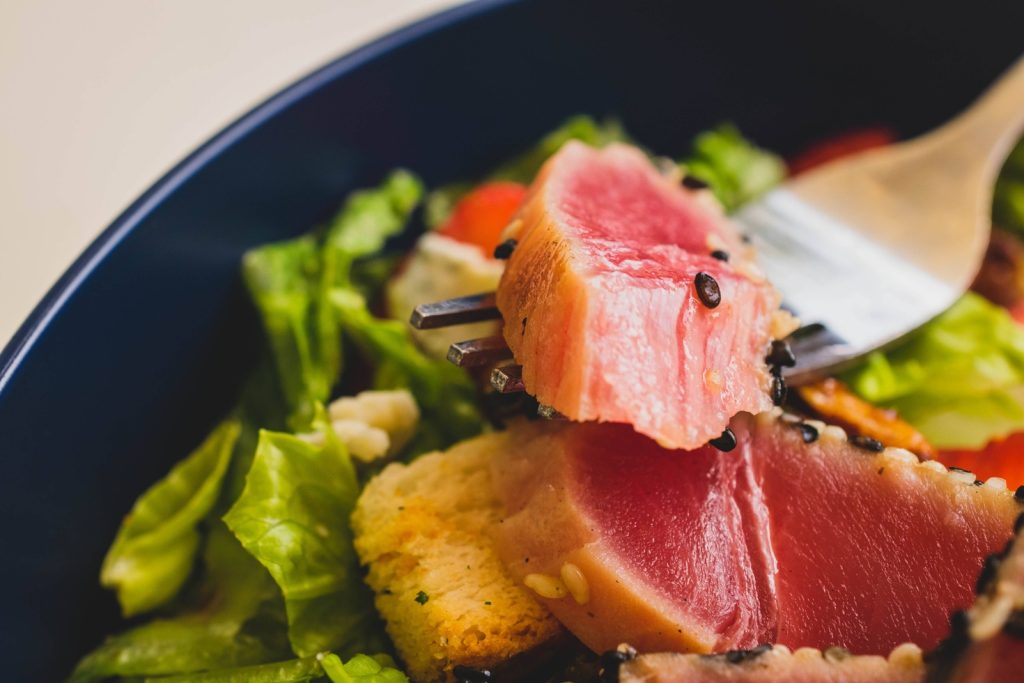
Greek Yogurt Parfait:
Layer Greek yogurt, berries, nuts, and honey for a delicious and protein-packed snack
Hard-Boiled Eggs:
Boil a batch of eggs at the beginning of the week for an easy protein snack on the go.
Homemade Trail Mix:
Combine nuts, seeds, and dried fruit for a filling and protein-rich snack.
Cottage Cheese and Fruit:
Mix cottage cheese with fresh fruit for a sweet and savoury high protein snack.

Roasted Chickpeas:
Toss chickpeas with olive oil and spices, then roast for a crunchy and satisfying snack.
Turkey Roll-Ups:
Wrap sliced turkey around veggies or cheese for a protein-packed snack.
Peanut Butter and Apple Slices:
Spread peanut butter on apple slices for a protein-rich and satisfying snack.
Hummus and Veggies:
Dip sliced veggies into homemade or store-bought hummus for a protein-packed snack.
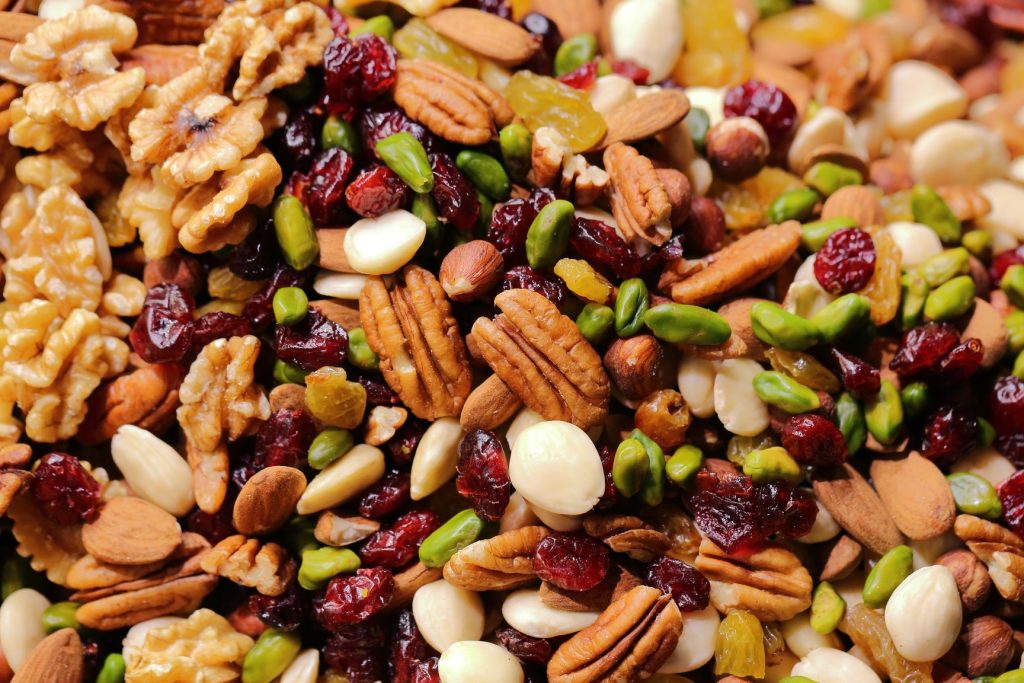
Roasted Edamame:
Toss edamame with olive oil and spices, then roast for a crunchy and protein-rich snack.
Beef Jerky:
Choose a low-sodium and minimally processed beef jerky for a high protein snack.
Protein Balls:
Mix nut butter, oats, and protein powder for a satisfying and proteinrich snack.
Greek Yogurt Dip:
Mix Greek yogurt with herbs and spices for a protein-packed dip for veggies or crackers.
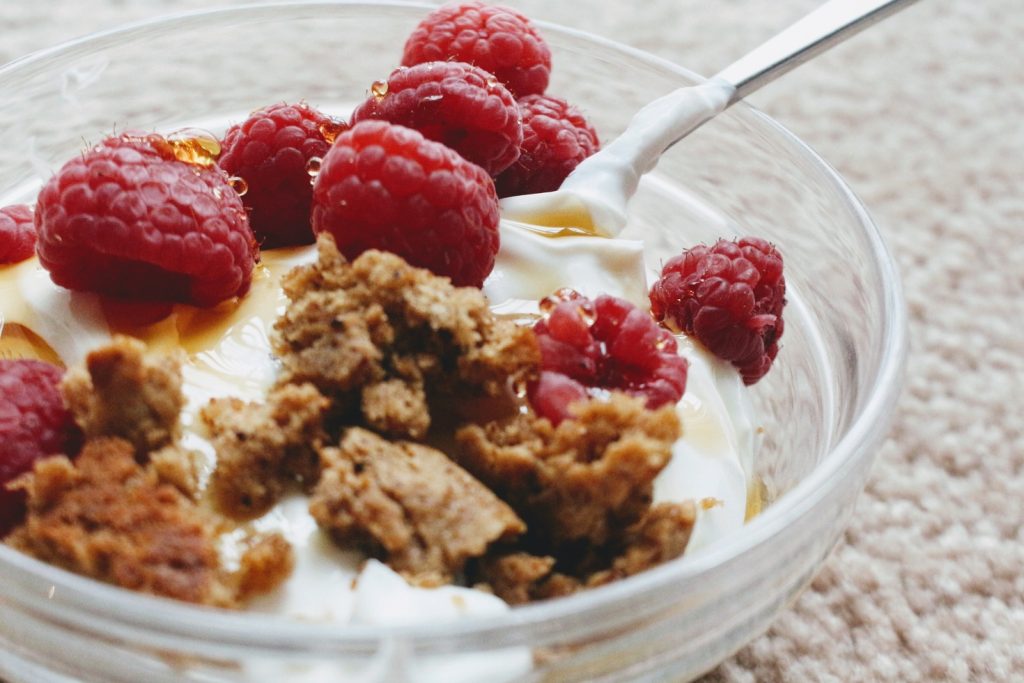
Quinoa Salad:
Cook quinoa and mix with veggies, herbs, and dressing for a proteinpacked snack.
Salmon Salad:
Mix canned salmon or salmon fillets with avocado, cucumber, and lemon juice for a protein-packed and omega-3 rich snack.
Homemade Protein Bars:
Mix nut butter, oats, protein powder, and honey for a homemade protein bar.
Sardines on Crackers:
Top crackers with canned sardines for a high protein and omega-3 rich snack.
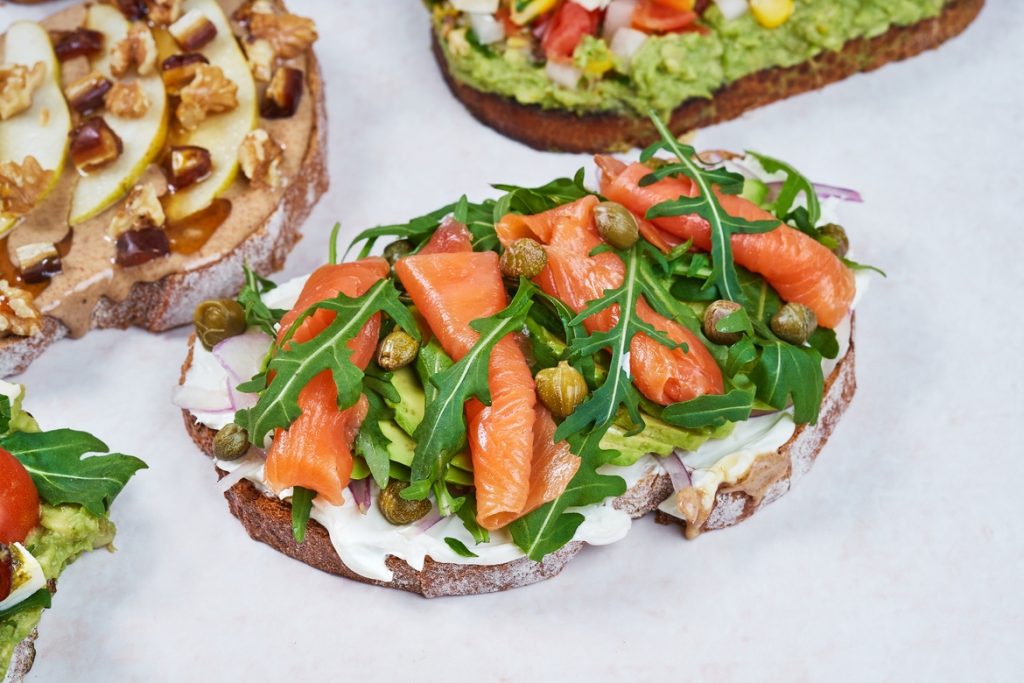
Avocado Toast with Egg: Spread avocado on toast and top with a fried or boiled egg for a protein-packed snack.
Roasted Nuts:
Toss mixed nuts with olive oil and spices, then roast for a protein-rich and crunchy snack.
Grilled Chicken Skewers:
Grill chicken skewers with veggies for a protein-packed and satisfying snack.
Peanut Butter and Banana Smoothie:
Blend banana, peanut butter, Greek yogurt, and almond milk for a protein-packed smoothie.
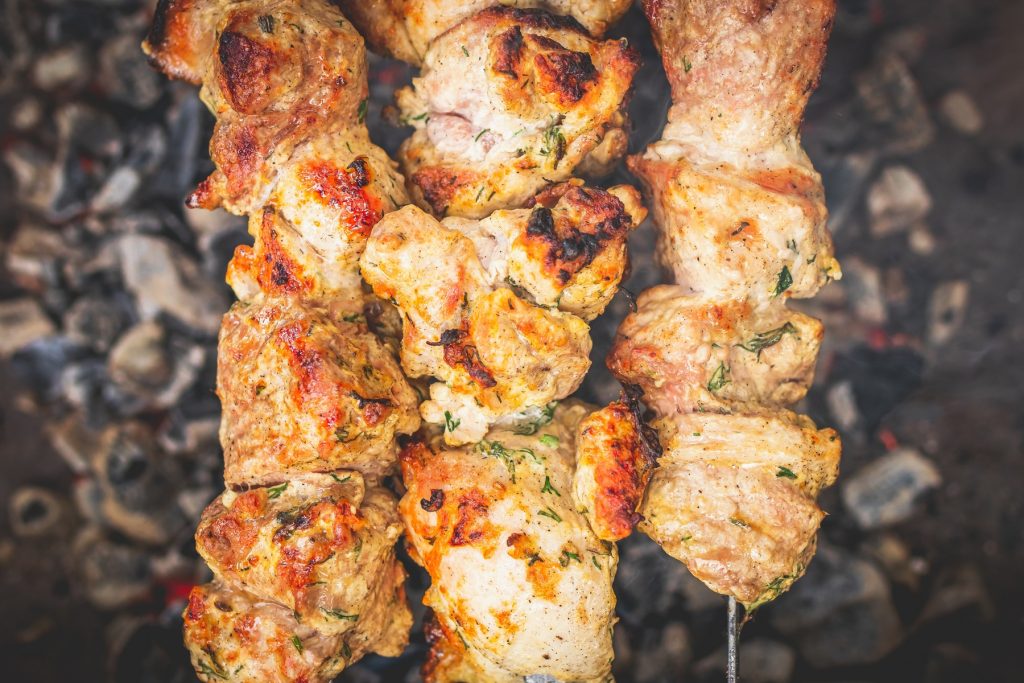
Baked Parmesan Zucchini Fries:
Cut zucchini into fries, coat with egg and parmesan, then bake for a protein-rich snack.
Chocolate Peanut Butter Protein Bars:
Mix protein powder, peanut butter, honey, and oats for a delicious and protein-rich snack bar.
Chia Seed Pudding:
Chia seeds are a great source of plant-based protein and can be mixed with almond milk, sweetener, and fruit to make a delicious and filling snack.
Smoked Salmon and Cream Cheese on Cucumber Slices:
Top cucumber slices with smoked salmon and cream cheese for a protein-rich and refreshing snack.
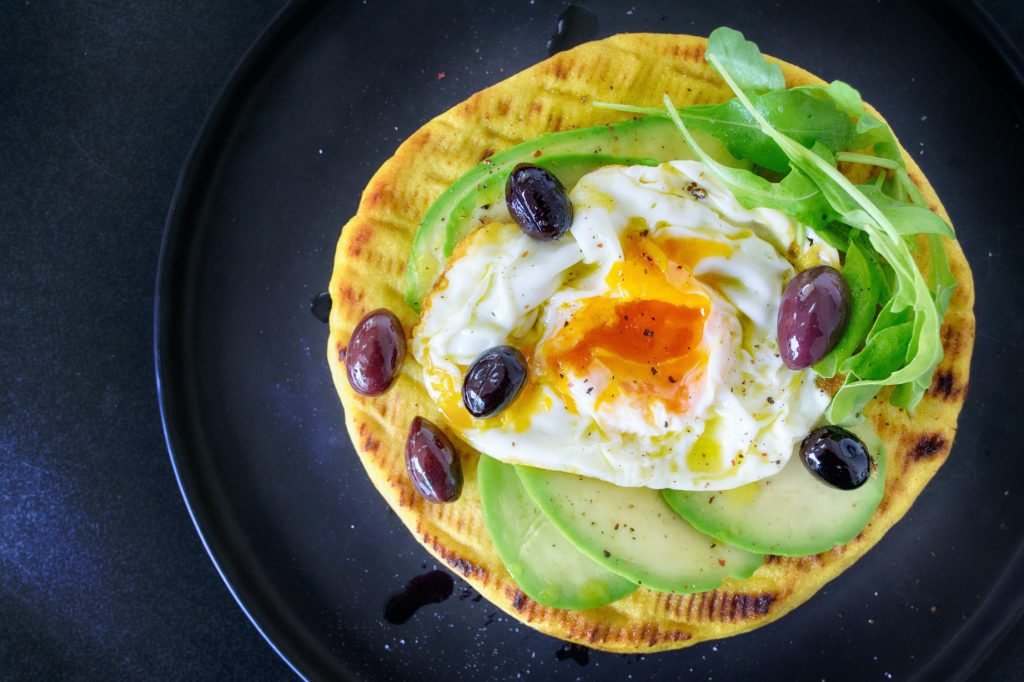
Chocolate Avocado Pudding:
Mix avocado, cocoa powder, almond milk, and protein powder for a protein-rich and chocolatey snack.
Ants on a Log:
Spread peanut butter on celery sticks and top with raisins for a protein-rich and fun snack.
Tuna Melt:
Top whole grain toast with tuna salad and cheese, then broil for a protein-rich and delicious snack
Edamame Hummus:
Blend edamame, Greek yogurt, garlic, and lemon juice for a proteinpacked and flavourful dip.
Baked Sweet Potato Fries:
Cut sweet potatoes into fries, coat with olive oil and spices, then bake for a protein-rich and delicious snack.
